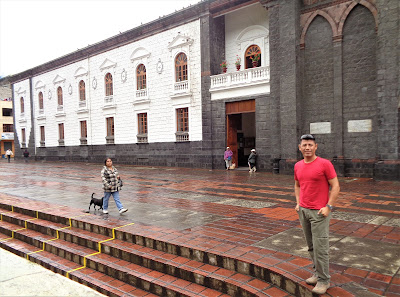martes, 20 de agosto de 2019
lunes, 19 de agosto de 2019
martes, 18 de junio de 2019
sábado, 4 de mayo de 2019
viernes, 3 de mayo de 2019
martes, 5 de febrero de 2019
jueves, 31 de enero de 2019
domingo, 2 de diciembre de 2018
LOJA CIUDAD DE LAS ARTES
CIUDAD DE LOJA
domingo, 14 de enero de 2018
INGAPIRCA
THE INCA TRAIL TO INGAPIRCA
lunes, 20 de noviembre de 2017
LAGUNA TOREADORA
PARQUE NACIONAL CAJAS
This
288-sq-km lies about 30 km west of Cuenca and is famous for is many beautiful
lakes well over 200 have been named, and there are countless smaller ponds, pools
and puddles. There are trout in the lakes and fishing is permitted. The terrain
is bleak and rough, and the lakes shine like jewels against the harsh
country-side. It´s rugged hiking and camping country, much of it páramo (high
Andean grasslands) at around 4000m above sea level. None of the area is above
4500m, so it doesn´t normally snow, although the winds and rains can make it
very cold. Hikers and campers should be well prepared with warm, windproof gear
and plenty of energy. Several readers have written to say that they underestimate
the cold weather and had a very cold trip – bring protective clothing!
In sheltered
hollows and natural depression of the terrain, small forests of the Polylepis
(quenua) tree are seen. This tree grows at the highest altitudes of any tree in
the world, and the quenua thickets provide welcome protection from the elements
for all kinds of unusual plants and animals. Everything is on small, tightly
packed scale, and forcing your way into one of these dense dwarf forests is
like entering a scene from o Grimm fairytale.
Bird-watchers
will have a great time looking for the many different species found on the
lakes, in the quenua forests and in the surrounding páramo. These are the
habitats of such evocatively named birds as the giant conebill, titlike dacnis
and gray-breasted mountain toucan. A variety of exotically named hummingbirds
can also be seen: the rainbow-bearded thornbill, sapphire-vented puffleg and
purple-throated sunangel, just to name a few. Bring binoculars if you have
them.












